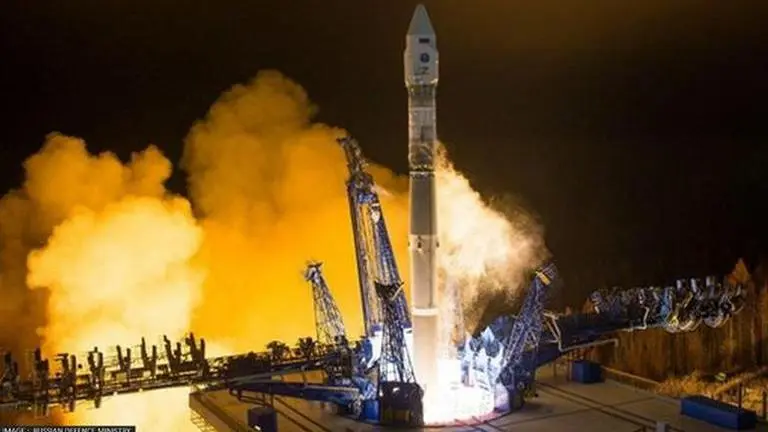Updated 30 March 2023 at 10:03 IST
Russia launches Soyuz-2.1v light carrier rocket carrying military satellite from Plesetsk
A Soyuz-2.1v light carrier rocket, launched from the Plesetsk spaceport in Russia on Wednesday night, has delivered a military satellite to orbit.
- Science News
- 3 min read

According to a statement by the Russian Defence Ministry on Thursday, a military satellite was successfully placed in orbit on Wednesday night using a Soyuz-2.1v light carrier rocket that was launched from the Plesetsk spaceport in Russia. "The spacecraft was put into its designated orbit at the scheduled time and was taken under control. A stable telemetric connection was established with the spacecraft," the statement read.
The Russian Defence Ministry reported that the Kosmos-2568 satellite, which was launched into orbit using a Soyuz-2.1v rocket from the Plesetsk spaceport, was functioning normally as per its onboard systems. On March 29 at 10:57 p.m - local time (19:57 GMT), the military satellite was launched from the Plesetsk spaceport using a Soyuz-2.1v light rocket,, both the pre-launch operations and the rocket's launch were executed without any issues, reported Russian news agency TASS.
Russian military satellites & GLONASS
Russia has a long history of launching military satellites into orbit for various purposes, including reconnaissance, communication, and navigation. These satellites play a crucial role in ensuring national security and maintaining the country's military capabilities.
One of the primary uses of Russian military satellites is for reconnaissance, providing high-resolution images of the Earth's surface for intelligence purposes. This information is used to monitor potential threats to national security and gather data on military activities around the world.
Advertisement
Communication satellites are also used by the Russian military to provide secure communication channels for military and government officials. These satellites allow for secure and reliable communication over long distances, even in remote areas where traditional communication infrastructure may not be available.
In addition, Russia has a network of navigation satellites known as GLONASS (Global Navigation Satellite System), which provides accurate positioning and navigation data for both military and civilian use. The GLONASS network consists of multiple satellites in orbit, which can be used for navigation, mapping, and tracking of vehicles and personnel.
Advertisement
The system is similar to the Global Positioning System (GPS) used by the United States, and provides users with accurate positioning and navigation information anywhere on Earth.
GLONASS consists of a constellation of over 24 satellites in orbit around the Earth, with additional backup satellites in case of system failures. These satellites emit signals that are picked up by GPS receivers, which use the data to determine the receiver's precise location, velocity, and time.
In addition to providing navigation data for military and civilian use, GLONASS is also used for tracking of vehicles and personnel, as well as for mapping and surveying. The system is particularly useful in remote and difficult-to-reach areas, where traditional ground-based navigation systems may not be available or reliable.
Overall, Russian military satellites are critical components of the country's defence infrastructure, providing crucial data and communication capabilities for national security and military operations.
Published By : Digital Desk
Published On: 30 March 2023 at 10:03 IST
